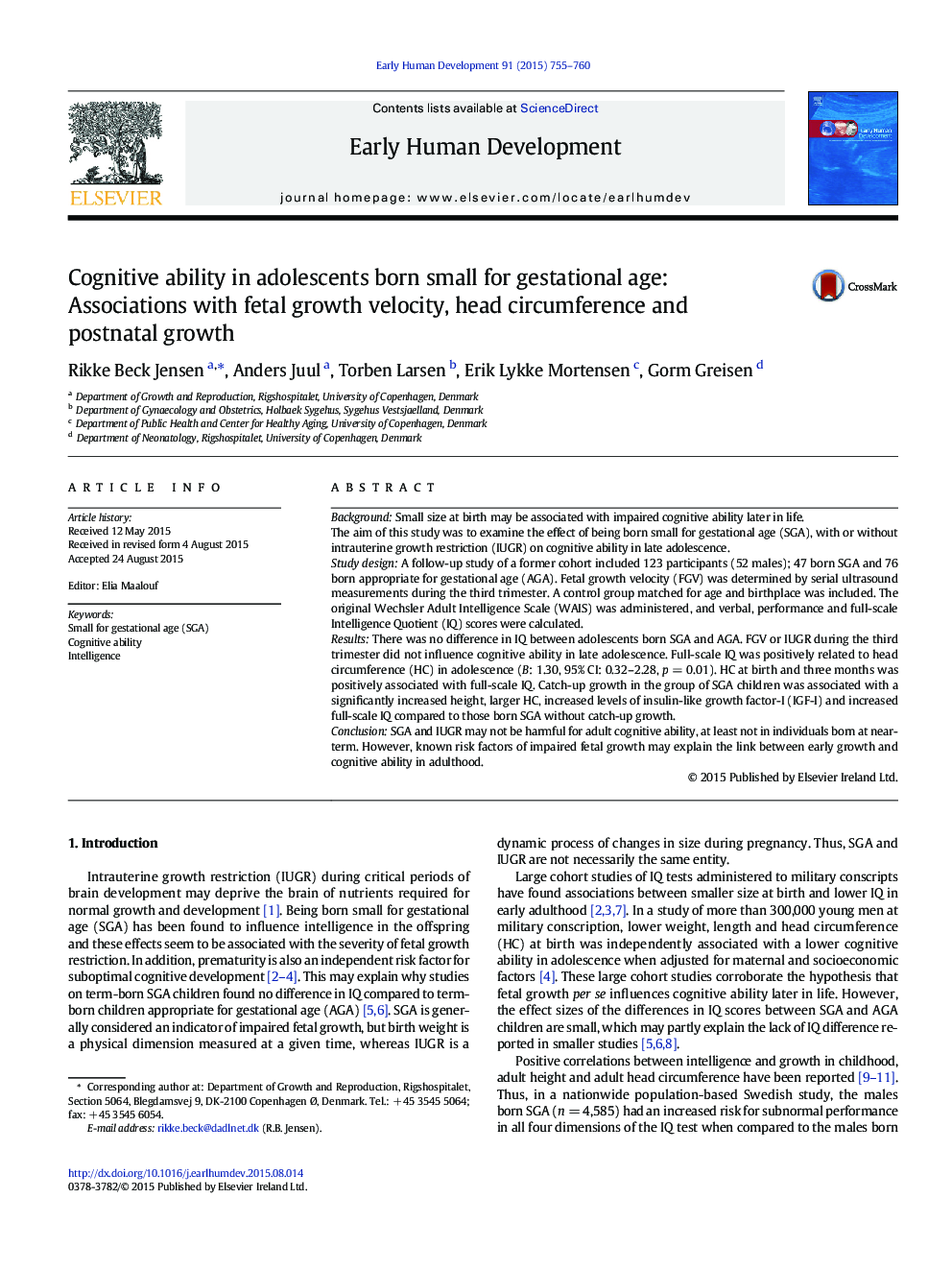| Article ID | Journal | Published Year | Pages | File Type |
|---|---|---|---|---|
| 3916712 | Early Human Development | 2015 | 6 Pages |
•No difference in IQ score between adolescents born SGA and AGA.•Full-scale IQ was positively related to head circumference.•SGA children with catch-up growth had an increased full-scale IQ score.•Risk factors of SGA may be the link between early growth and cognitive ability.
BackgroundSmall size at birth may be associated with impaired cognitive ability later in life.The aim of this study was to examine the effect of being born small for gestational age (SGA), with or without intrauterine growth restriction (IUGR) on cognitive ability in late adolescence.Study designA follow-up study of a former cohort included 123 participants (52 males); 47 born SGA and 76 born appropriate for gestational age (AGA). Fetal growth velocity (FGV) was determined by serial ultrasound measurements during the third trimester. A control group matched for age and birthplace was included. The original Wechsler Adult Intelligence Scale (WAIS) was administered, and verbal, performance and full-scale Intelligence Quotient (IQ) scores were calculated.ResultsThere was no difference in IQ between adolescents born SGA and AGA. FGV or IUGR during the third trimester did not influence cognitive ability in late adolescence. Full-scale IQ was positively related to head circumference (HC) in adolescence (B: 1.30, 95% CI: 0.32–2.28, p = 0.01). HC at birth and three months was positively associated with full-scale IQ. Catch-up growth in the group of SGA children was associated with a significantly increased height, larger HC, increased levels of insulin-like growth factor-I (IGF-I) and increased full-scale IQ compared to those born SGA without catch-up growth.ConclusionSGA and IUGR may not be harmful for adult cognitive ability, at least not in individuals born at near-term. However, known risk factors of impaired fetal growth may explain the link between early growth and cognitive ability in adulthood.
